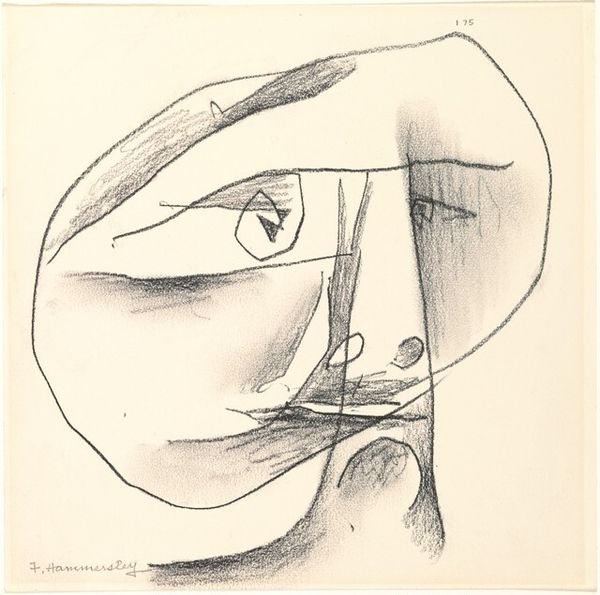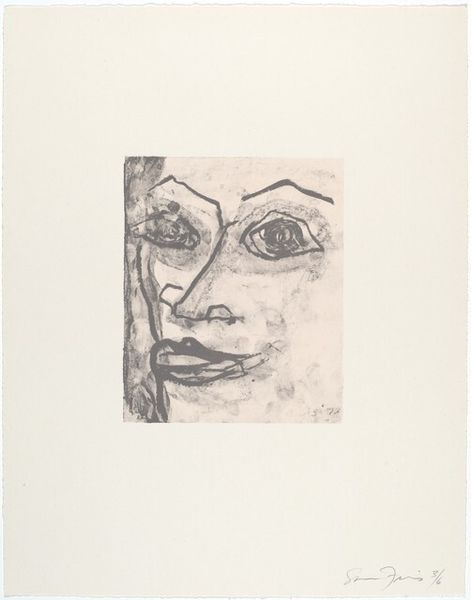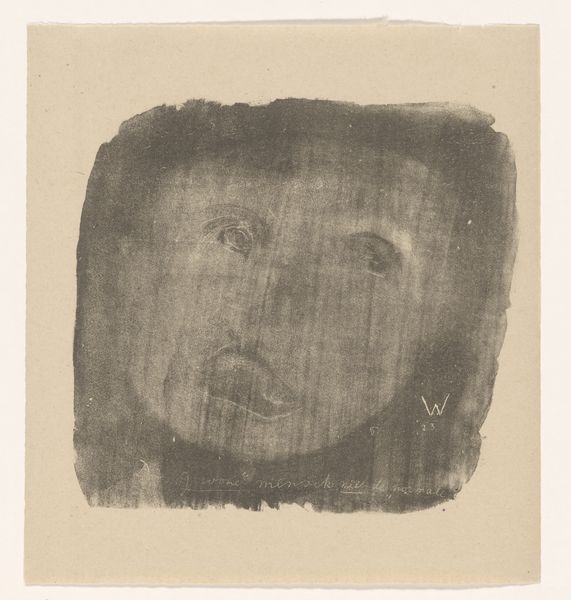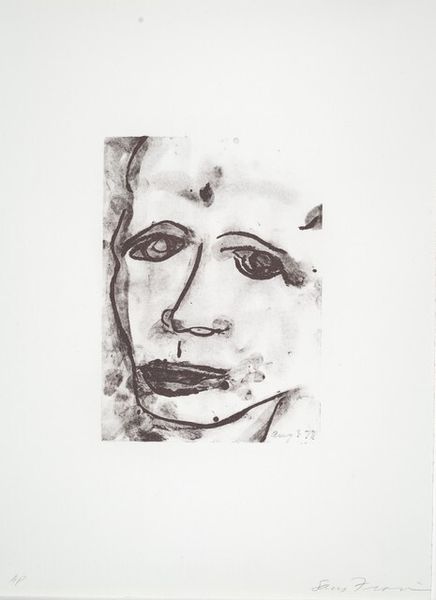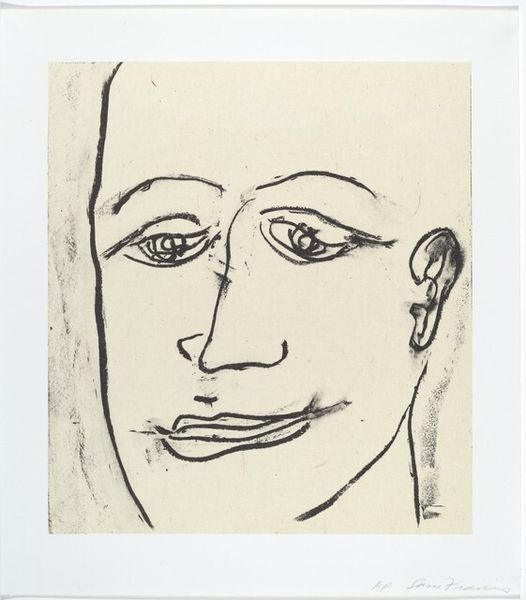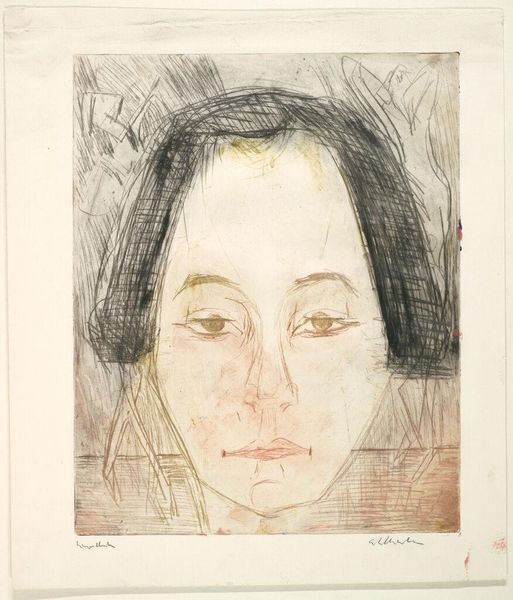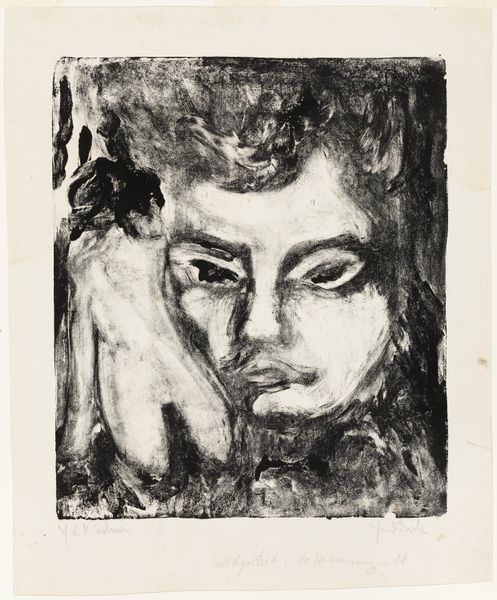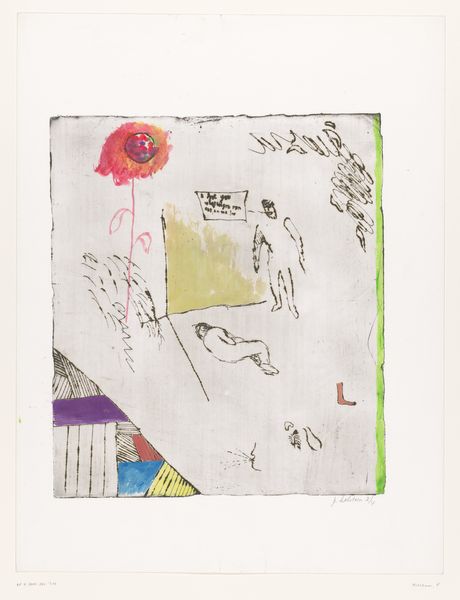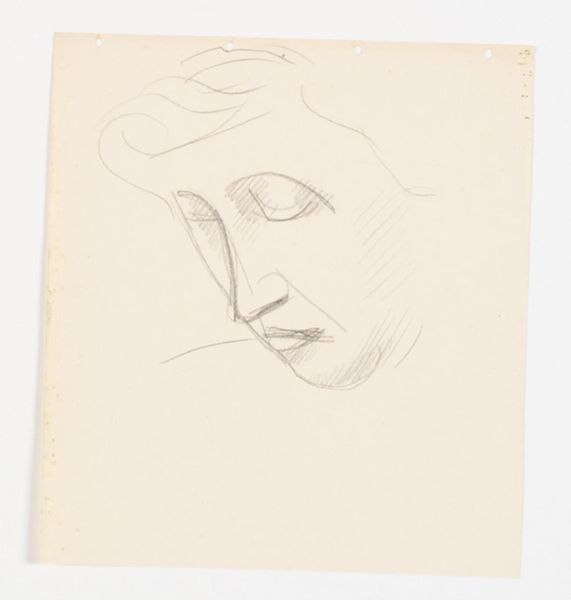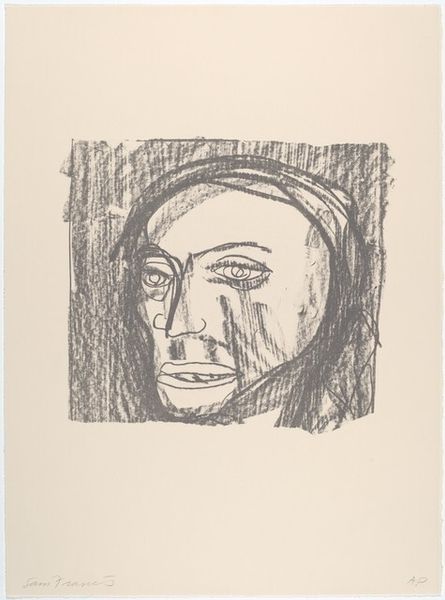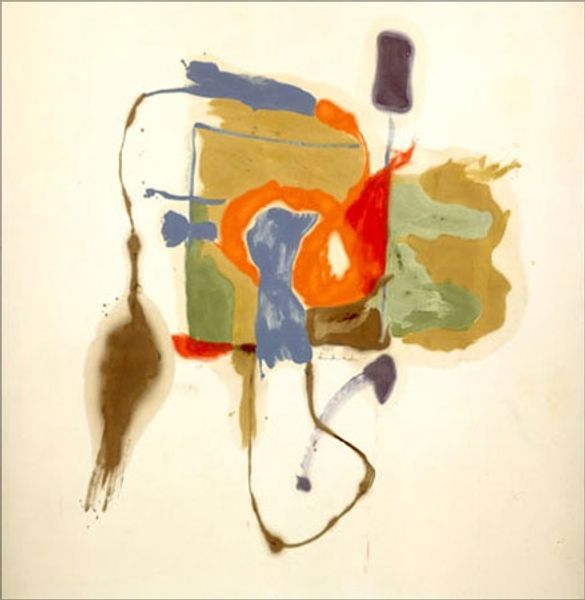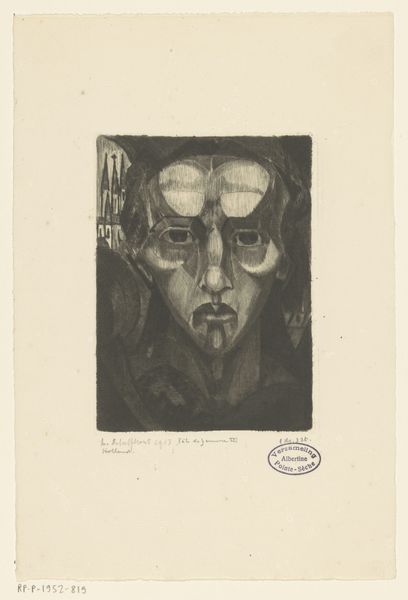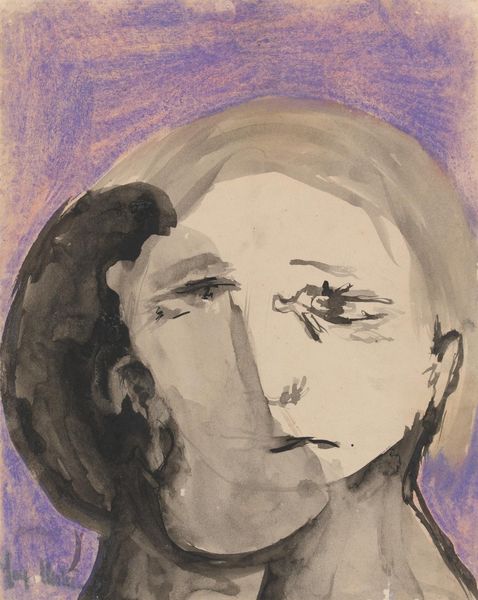
Dimensions: support: 385 x 375 mm
Copyright: © Richard Hamilton 2014. All rights reserved, DACS | CC-BY-NC-ND 4.0 DEED, Photo: Tate
Curator: Here we have Richard Hamilton's 1963 work, "Hugh Gaitskell as a Famous Monster of Filmland," currently residing in the Tate Collections. Editor: It feels ghostly, unsettling. The starkness of the face combined with that brutal red slash… what's going on there? Curator: The composition employs a deliberate fragmentation, disrupting the conventional portrait. Note how the planes of Gaitskell's face are rendered with an almost clinical detachment, offset by that visceral stroke of red. Editor: It’s like he’s dissecting a political figure, or maybe even exorcising him. I like how the roughness contrasts with the subject's public persona. Curator: Indeed. Hamilton is playing with the mediated image, questioning the very notion of representation. The monster reference, too, adds a layer of cultural critique. Editor: For sure! It's almost like a voodoo doll rendition. You can't help but feel the tension simmering beneath its surface. I wonder what Hamilton was trying to tell us here? Curator: Undoubtedly, this work continues to provoke questions about politics, representation, and the monstrous within. Editor: Absolutely! It's a bold visual commentary, even now.
Comments
tate 6 months ago
⋮
http://www.tate.org.uk/art/artworks/hamilton-hugh-gaitskell-as-a-famous-monster-of-filmland-1963-p78721
Join the conversation
Join millions of artists and users on Artera today and experience the ultimate creative platform.
tate 6 months ago
⋮
Hugh Gaitskell as a Famous Monster of Filmland (1963) is a print based on a coloured pencil sketch that Hamilton made in the process of working out how to compose the painting Hugh Gaitskell as a Famous Monster of Filmland, 1964 (Arts Council Collection, London). The subject of the work was the leader of the Labour Party, then in opposition, who had supported the government’s retention of a nuclear deterrent, despite his own party’s lack of support. Hamilton, an anti-nuclear campaigner and supporter of the Labour Party, saw this as a betrayal and decided to use Gaitskell in order to make a satirical painting. In the early 1960s Hamilton and his wife Terry O’Reilly, a CND activist, collected press photographs, headlines and newspaper cartoonists’ caricatures. When she died tragically in a car crash in 1962, a few months before the death of Gaitskell, Hamilton shelved the project for a year, before taking it up again in homage to her.
